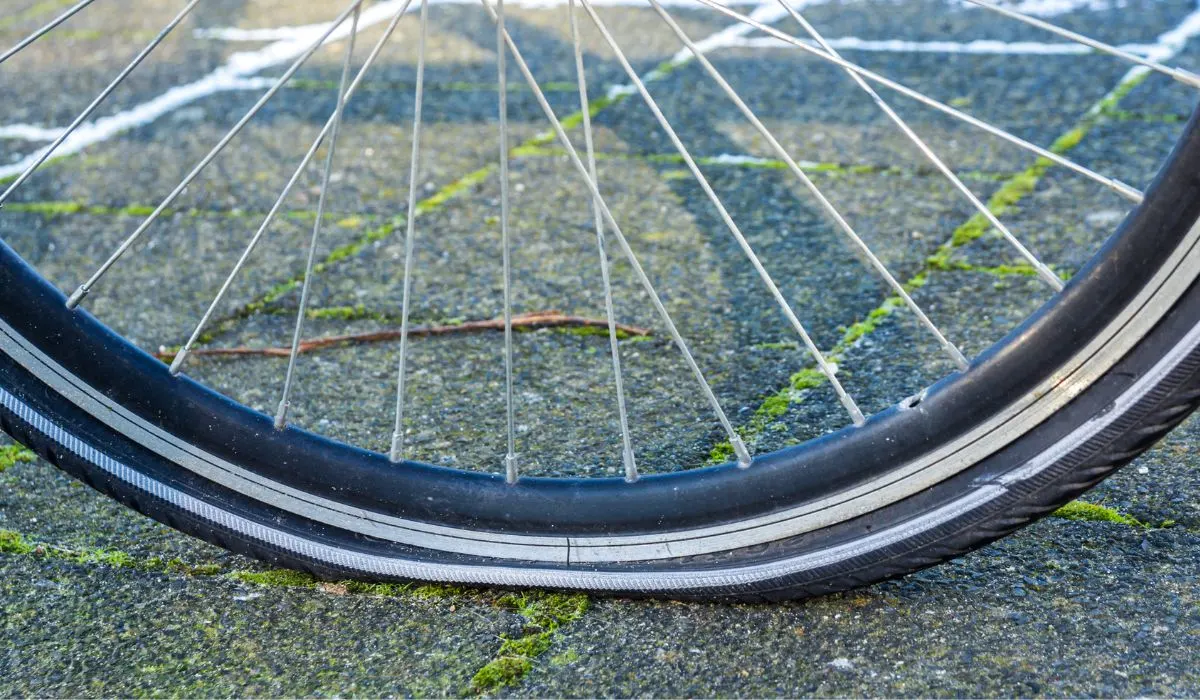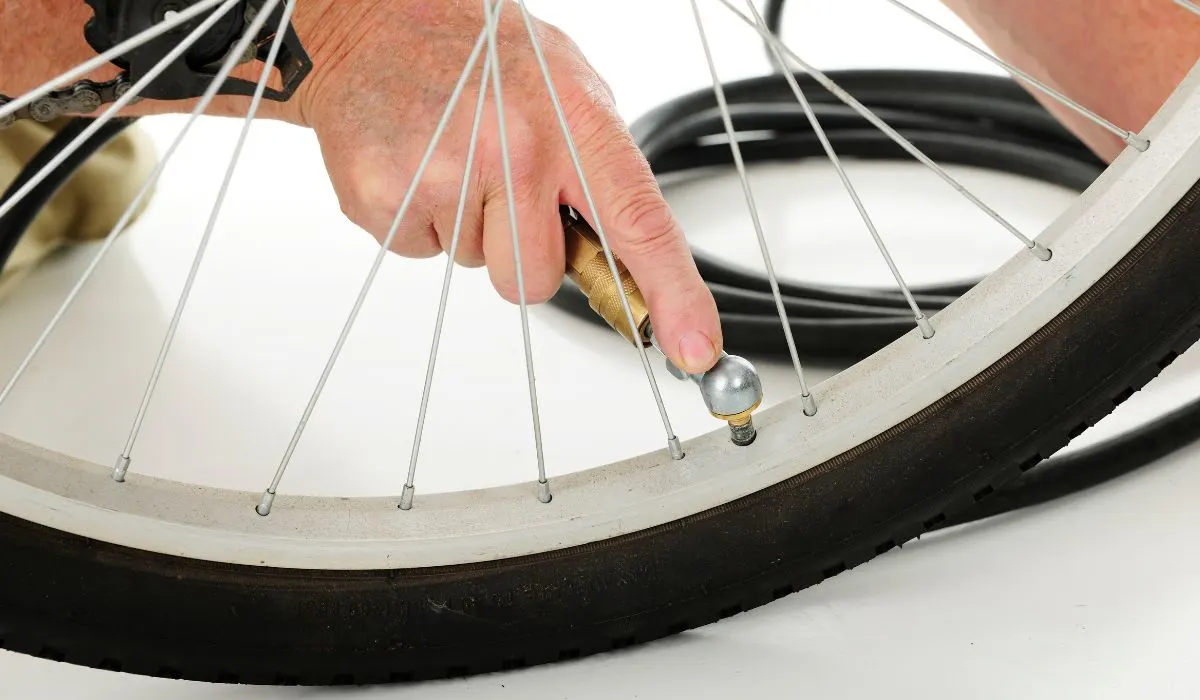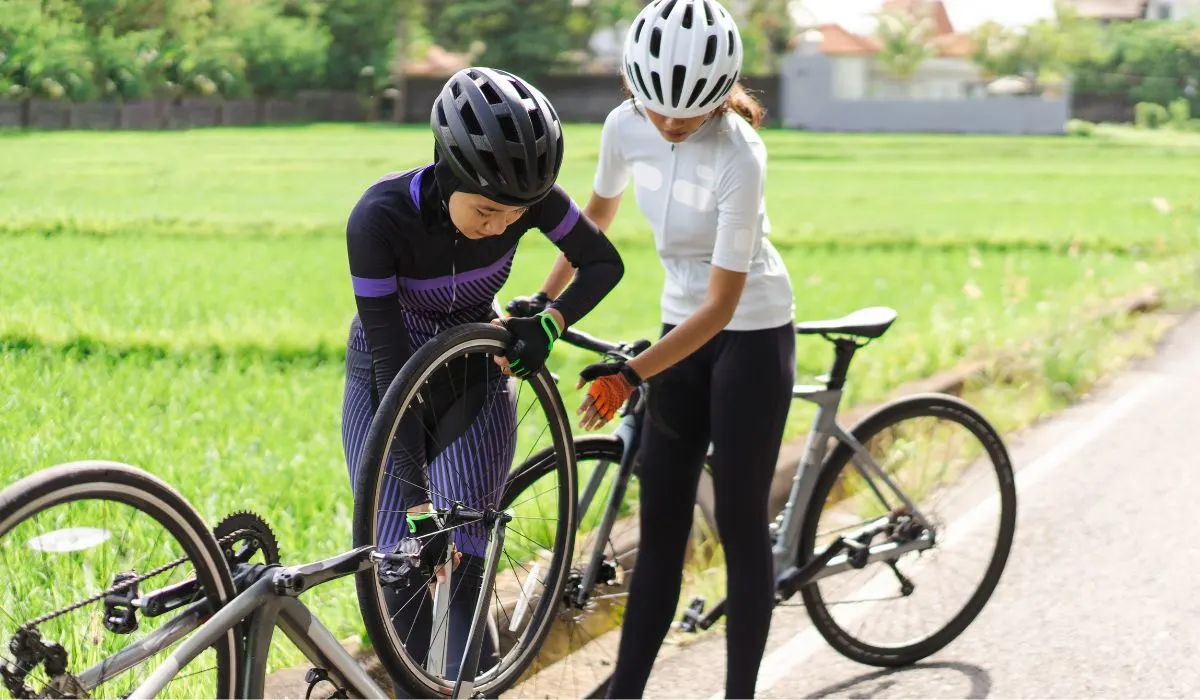
As an avid cyclist, you know that there are some essential items to keep in your biking arsenal. One of these essentials is a tire pump. If you don’t have a tire pump on hand and the only option available is a ball pump, the best thing to do is to determine whether or not you can use a ball pump on a bike.
It is best to avoid using a ball pump on your bicycle tires because they usually do not have a high enough pressure output. Although, if you are willing to put in the extra work, the ball pump is ok to use as long as it has a removable nozzle and the correct adapter to fit a bike tire valve.
There are several reasons to refrain from using a ball pump on your bike, but if the options are between trying to blow your tires up with your mouth or using a ball pump, definitely choose the latter.
Consider these aspects before using your ball pump:
- Do you have the correct adapter?
- Can the right amount of pressure be put into the tires?
Can You Use A ball Pump On Your Bike?
One thing to remember when pumping up bicycle tires is that safety is the first concern. Tires that do not have enough pressure are not a safe bet. Consider all your options before using a ball pump on a bike.
If a ball pump is all that is available, there are ways to use it on your bike. Before using a ball pump, be sure it has a removable nozzle.
Ball pumps come with an inflator needle which is the adapter used to inflate balls, but bicycle tires need one of two types of adapter to work with either a Presta or Schrader valve, sold on Amazon.
If you have such a ball pump and the correct adapter, you are one step closer to using it on your bike. Finally, you will need to consider whether or not you can produce enough psi to fill your bike tires safely.
Typically, ball pumps can only generate up to 15 psi, whereas most bike tires need between 35 -120 psi on average.
To compare:
- Mountain bikes need between 25 -35 psi
- Comfort bikes need between 35 – 70 psi
- Road bikes require 80 – 130 psi
In contrast:
- Basketballs require 7.5 – 8.5 psi
- Soccer balls need 8.5 – 15.6 psi
These different requirements mean that for using a ball pump, much more effort will need to be exerted to get the required pressure in your bike tires. Even if it takes longer to inflate your tire, the chances of filling it enough are slim.
Still, if your ball pump meets all the requirements to use it on your bike adequately, you are good to go.

The Complete How-To Guide For Using A Ball Pump On A Bike
Before starting, remember that a ball pump is not the best option for a bike. Still, if the ball pump meets the requirements and is the only option for filling the bicycle tires, use the following easy steps as a guide.
Step #1: Use The Correct Valve Adapter
The bike will either require a Presta or a Schrader valve adapter. Connect this adapter to your ball pump.
Step #2: Calculate The Required Tire Pressure
The type of bike will dictate the amount of pressure needed to fill the tires. Each tire will have its maximum and minimum tire pressure written on it. Make sure that the pressure is above the minimum and below the maximum.
Step #3: Remove The Screw Cap From The Tire Valve
Typically, Schrader and Presta’s valves have plastic caps to remove. This cap has the vital job of keeping dirt and debris from clogging the valve opening.
HOT TIP: These caps like to do disappearing acts, so make sure that you store them somewhere safe, like your back pocket.
For Presta valves, the lock nut needs to be unscrewed, which is done by turning the valve in several rotations before attaching the pump. Schrader pumps do not require this step.
Step #4: Connect The Ball Pump To The Valve
Once the valve is ready, connect the ball pump to it. Keep in mind the required pressure of the tires.
Step #5: Inflate Tire
Pump the tires up to fill them as needed, depending on how much pressure they require. If your ball pump does not have a mechanism that shows the pressure, test how firm the tire is with your fingers.
Pump the tire until it is reasonably inflated, then press a finger into it. If it can push in by 1cm and no more, the tire is filled enough. If a finger can push in 2cm or more, it is still under-inflated and needs more pumping.
On the other hand, if a finger can’t be pushed into the tire at all, it is over-inflated.
Step #6: Remove The Pump
Once finished pumping the bike tire, remove the pump nozzle from the bike valve. If the tires are over-inflated, let some of the air out before going any further.
Step #7: Close The Bike Tire Valve And Replace The Cap
If you have a Schrader valve, replace the cap, and then the bike is ready. For a Presta valve, screw the lock until it is closed before returning the cap.

Conclusion
Ball pumps are not the best option to pump up our bike tires. If there is no other choice, use them as long as you have the correct attachments.
Depending on the specific bike, you will need a Schrader or Presta valve adapter to properly connect to the bike valve. Once connected, pump the tires enough to have the required tire pressure.
You might also be interested in:
